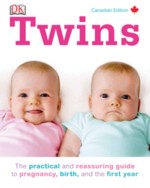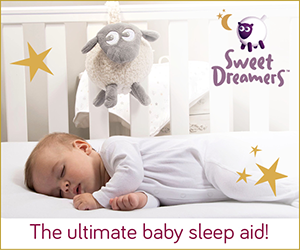Feeding Twins

There are two babies and two breasts, but it doesn’t always add up to easy. It is possible to breastfeed twins, but there are other options that may work for you and your babies.
Breastfeeding
The best place to learn is in the hospital. The staff will help you latch your babies on, teach you how to check that they are in the correct position, and show you how to make yourself as comfortable as possible. Milk is created on a supply and demand basis, but it can take a few days for your milk to “come in.”
Premature babies may need to be tube fed but can still benefit from breast milk. If your milk is yet to come in ask if the hospital has a milk bank. Some women donate breast milk and it is possible that your babies could benefit from their generosity until you are ready to feed them yourself.
You can feed your babies together or separately. Feeding them together takes practice and perseverance, but it saves time and puts both babies on the same schedule. You might prefer to nurse your babies separately by staggering the feedings and nursing them one at a time. A staggered approach to feeding takes longer, but allows you to have one-on-one time with each baby and get the hang of breastfeeding.
Once your milk is in, you might consider using breast pads. These are soft, absorbent disks worn inside your bra to absorb leakage.
Tandem feeding
The football hold is the most popular way to nurse twins simultaneously. For the first few days, the three of you will need help positioning cushions and latching on, but as you all gain experience and confidence, this can be a very time-efficient way to feed them.
Hold one baby under each arm and guide their mouths to your nipples. You may want to assign each baby their own breast, or change at each feeding. If one baby is much smaller than the other, consider swapping breasts at each feeding, at least initially, to stimulate them both and encourage supply. Breastfeeding takes practice, so try to stay relaxed and take things one feeding at a time. If one baby is hungrier than the other and they always nurse at the same breast, you may become lopsided at times but this usually settles down and it is unlikely anyone else will notice.
The eye contact between all three of you when you tandem nurse is a powerful reminder of the physical bond that you share and a unique twin mom experience.
Little and often
Initially your babies will need feeding little and often — on average every three hours. As their tummies grow, they will be able to manage more food and will need feeding less frequently. You can nurse on demand, but keep in mind that it is highly unlikely both babies will “demand” to be fed simultaneously, so you may find you are constantly nursing a baby if you try this approach. If your babies are very premature, you may be advised to wake them regularly to be fed, otherwise they may choose sleeping over eating… and you need them to grow bigger and stronger.
Express yourself!
Ask a breastfeeding adviser at the hospital to show you how to express your milk to encourage it to come in. You can express with a handheld or electric pump. You can rent or buy breast pumps if you would like to continue breastfeeding when you leave
the hospital.
Expressing milk means that you can build a milk supply and indulge in the occasional guilt-free snooze, safe in the knowledge that your babies are benefiting from being fed breast milk while you benefit from some much-needed sleep. Expressed breast milk can be stored for up to three months in the freezer. Frozen milk should be defrosted in the fridge. Breast milk can be stored in the fridge ideally for no more than 24 hours, though it is likely to be safe for as long as five days if your fridge is below 39°F (4°C).
Benefits of breastfeeding twins
Breastfeeding isn’t for everyone, and breastfeeding twins is demanding, but there are certain benefits which mean you might want to give it a try it and see how you do.
• It’s free.
• It passes on some of your immunity.
• It is available on demand and at the right temperature.
• It is easier to digest than formula so your babies are less likely to suffer from constipation.
• It helps you regain your pre-pregnancy shape more quickly.
• There are no bottles to sterilize.
• It may protect you from some cancers later in life.
Photo and excerpt from Twins – Copyright 2012 DK Publishing





